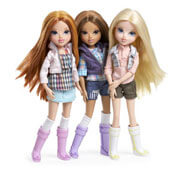Children’s worlds—and the toy and products industries—always reflect the adult world. I’ve long said that if one really wants to understand adult perceptions and values, one need only look at what is being reflected in toys, entertainment and lifestyles targeted to children. It’s not that complex. Kids want to be grown up, and they want their own versions of grown-up experiences they see in the culture. Look at how until very recently toys reflected gender stereotyping, as just one example.
Today, however, there is quite the cottage (well, more like commodious house) industry devoted to “saving childhood.” Generally, this means promoting a romanticized view of childhood that has little to do with what “is” and is all about promoting what “should be.” Yet markets have a specific function of dealing with realities and not ideals. There’s no “war on childhood;” there’s a reality that makes many people uncomfortable.
And yet, aside from hand-wringing and attacking toy companies, marketers and commercialism, I see nothing addressing the larger, more serious issue—an adult world that supports overt sexuality in media, the lionization of rampant partying and irresponsible behavior as “fun,” political discourse that is emotionalized rather than rational and the list goes on and on.
Yet while adults support these behaviors with their viewing, purchasing and behavioral habits, many seem to want some kind of gauzy veil to descend over childhood and for kids to live in a completely separate world. Sorry, you can’t have it both ways.
And, while we’re at it, let’s talk about “pushing sexuality,” which is what fashion doll manufacturers are routinely accused of. No, they’re not. Fashion dolls reflect the styles that are dominant in adult culture. The notion of “pushing sexuality,” is the projection of adults onto a lump of plastic their own perspectives, insecurities, and opinions. What little girls see when they look at a doll is something that’s pretty, based on what they see in the adult culture around them. You can’t change the doll unless you change the culture it reflects.
I feel for parents and caregivers who feel as though a lot of this stuff is being pushed at them. But since the mid-19th Century, commercial culture has been rampant. I understand that there are more opportunities to target kids than ever before and that some parents may not support what they see in the culture around them and are upset when that culture reaches their kids. But that’s the reality of our time. It’s been that way, largely since World War II, with the rise of the teenage culture. The rise of the “tween culture” is just a logical outgrowth of that in a more fragmented culture.
So what’s the answer? Well, it’s not making blanket statements and accusing marketers. It really happens in the home, and it’s all about context. It’s hard in this day and age, but parents and caregivers need to provide the framework for their kids to perceive the world. You’re not going to change the culture, and you’re not going to change how markets work.
What you can do is exert your own influence on the kids in your life—and realize that they are more likely to reflect what you teach them than what they see on any screen.
Oh, and a little perspective is in order. Every generation of parents thinks they had it harder than their own parents. The technology may change, but the challenges are the same because the world is always changing. How you respond to what’s in your control is what will make all the difference.

